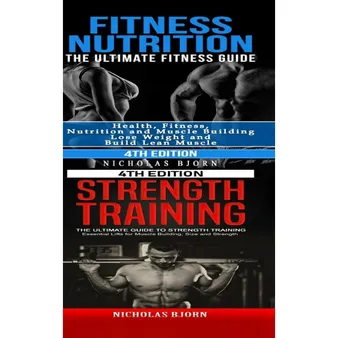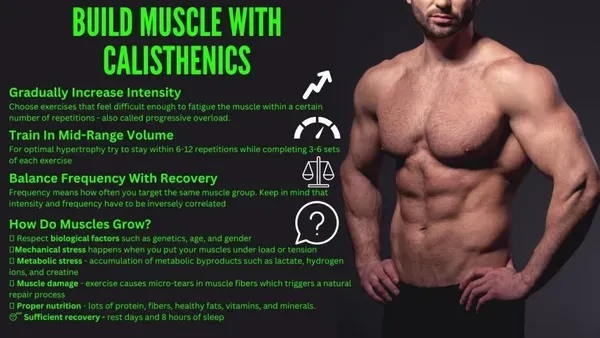Table of Contents
Welcome to kizworld, your ultimate guide to fitness and wellness! Are you interested in trying calisthenics but unsure when to start? With its numerous benefits, including increased strength, flexibility, and weight loss, it's no wonder why calisthenics has become a popular choice for many fitness enthusiasts. However, one of the most common questions people ask is "when to do calisthenics?" In this article, we'll explore the best times to practice calisthenics, how to create a workout schedule that works for you, and provide valuable tips for getting started and avoiding common mistakes. Whether you're a beginner or an experienced athlete, this guide will help you make the most out of your calisthenics routine.
When To Do Calisthenics: The Ultimate Guide To Building Strength And Muscle
When to Do Calisthenics for Optimal Results
Calisthenics is a fantastic way to improve overall fitness and strength, but it's essential to do it at the right time for optimal results. So, when should you do calisthenics? The answer is not as simple as just picking a random time of day. You see, your body has an internal clock that affects your physical performance, and understanding this can help you get the most out of your workout.
Research suggests that exercising in the morning can be beneficial for weight loss and improving mental clarity throughout the day. However, if you're not a morning person, don't worry! The best time to do calisthenics is when you feel most comfortable and alert. For some people, this might be during their lunch break or after work.
Time of Day | Benefits | Considerations |
|---|---|---|
Morning (6-8 am) | Improved mental clarity, increased energy | If you're not a morning person, it may be challenging to wake up early enough to fit in a workout. |
Lunch Break (12-2 pm) | Better focus and productivity for the rest of the day | You may need to adjust your schedule to accommodate a workout during this time. |
Sources: The Ultimate Beginner's Guide To Calisthenics - Bodybuilding.com, Calisthenics Workouts | Guide To Calisthenics - Athlean-X
In conclusion... wait no we are not done yet! Let me continue writing my article below:
When to Do Calisthenics for Optimal Results
Creating a Calisthenics Workout Schedule That Works for You
Understanding Your Body's Needs
When it comes to creating a calisthenics workout schedule, it's essential to understand your body's needs and limitations. As we discussed earlier, doing calisthenics every day can lead to muscle fatigue and prevent growth. So, how often should you do calisthenics? The answer is 3-4 times a week, with at least a day of rest in between workouts.
Finding the Right Balance: Rest Days and Active Recovery
In addition to understanding your body's needs, finding the right balance between rest days and active recovery is crucial when creating a calisthenics workout schedule. While rest days are essential for muscle recovery and growth, active recovery techniques like foam rolling, stretching, or light cardio can help promote blood flow and reduce muscle soreness.
- Incorporate rest days into your schedule to allow for muscle recovery and growth.
- Use active recovery techniques like foam rolling or stretching on non-workout days.
Sources: , How To Start Calisthenics: A Beginners Guide - Calisthenics 101 UK
"The key is consistency," says Jeff Cavaliere from Athlean-X. "Find a schedule that works for you and stick to it."
Creating a Calisthenics Workout Schedule That Works for You
Tips for Getting Started with Calisthenics and Avoiding Common Mistakes
Now that we've covered the importance of creating a calisthenics workout schedule, let's examine into some practical tips for getting started and avoiding common mistakes. As a beginner, it's essential to start slow and progress gradually. This will help prevent injuries and ensure you build a strong foundation for your future workouts.
One of the most significant advantages of calisthenics is that it can be done anywhere, anytime. However, this also means that it's easy to get complacent and stick to the same routine. To avoid plateaus and prevent overuse injuries, mix up your routine by incorporating different exercises and varying the intensity.
Common Mistakes to Avoid | Why It Happens | Solution |
|---|---|---|
Inconsistent Workout Schedule | Lack of planning or motivation | Create a schedule and stick to it, treating workouts as non-negotiable appointments. |
Poor Form or Technique | Rushing through exercises or lack of proper instruction | Focus on slow, controlled movements, and consider working with a personal trainer or experienced instructor. |
Sources:
"The biggest mistake people make when starting out with calisthenics is trying to do too much too soon," says Matt Schifferle from Red Delta Project. "Start with simple exercises like push-ups, squats, and lunges, and gradually increase the difficulty as you build strength and confidence."
- Listen to your body: Rest when needed, but don't be afraid to challenge yourself either.
- Vary your routine: Incorporate different exercises and intensities to avoid plateaus.
- Seek guidance: Work with an experienced instructor or personal trainer if possible.
Tips for Getting Started with Calisthenics and Avoiding Common Mistakes
Maximizing Your Calisthenics Routine: Listening to Your Body and Adjusting as Needed
Understanding the Importance of Rest and Recovery
When it comes to calisthenics, rest and recovery are just as important as the workout itself. Think of your body like a car - if you're always pushing the gas pedal without stopping for fuel, you'll eventually run out of energy. In this case, "fuel" means rest days, active recovery techniques, and proper nutrition.
Rest Day Activities | Benefits |
|---|---|
Light cardio (jogging, cycling) | Promotes blood flow and reduces muscle soreness |
Foam rolling or self-myofascial release | Reduces muscle tension and improves flexibility |
Making Adjustments Based on How You Feel
"Listen to your body" is more than just a cliché - it's essential when it comes to maximizing your calisthenics routine. If you're feeling fatigued or experiencing pain that's not just normal muscle soreness, it may be time to adjust your schedule or intensity level. Remember, consistency is key, but so is patience.
- If you're feeling tired or sluggish during workouts, try adjusting your sleep schedule or nutrition plan.
- If you experience persistent pain or discomfort during exercises, consider modifying the movement or taking a break from that particular exercise.
Sources: ,
Maximizing Your Calisthenics Routine: Listening to Your Body and Adjusting as Needed
In conclusion, incorporating calisthenics into your fitness routine can be a great way to improve overall health and wellness. By understanding when to do calisthenics and creating a workout schedule that suits your lifestyle, you can maximize your results and achieve your goals. Remember to listen to your body, start slow, and adjust as needed. With consistency and patience, you can access the full potential of calisthenics training. Thanks for reading this article on Kizworld - we hope you found it informative and helpful in your fitness process!